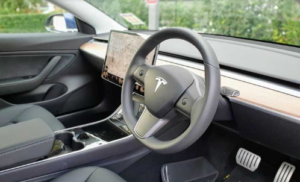
The Technology Supporting Electric Vehicles
More than merely a trend, electric vehicles (EVs) fundamentally change our perspective on energy usage and mobility. Knowing the technology driving these vehicles is essential as the world turns toward sustainable solutions to fight climate change. The several elements and technologies underpinning electric vehicles battery technology, electric motors, charging infrastructure and EV future are investigated in this paper.
a. Lithium-Ion Batteries
The most often utilized kind of battery in electric cars nowadays is lithium-ion one. Their great energy density indicates that a comparatively tiny size may store a lot of energy. For automotive uses, they also have a low self-discharge rate and can manage numerous charge cycles.
b. BMS: Battery Management Systems
Monitoring and controlling battery performance calls both a battery management system. By stopping overcharging, overheating, and too strong discharging all of which might cause battery failure or fires it guarantees safety. Furthermore balancing the charge among individual cells, the BMS prolongs the life of the battery.
c. solid-state batteries
Though lithium-ion batteries rule the market, researchers are looking at solid-state batteries as a next-generation fix. Perhaps with better safety and higher energy densities, these batteries use a solid electrolyte rather than a liquid one. They are still under development, though, and not yet extensively distributed.
2. Electric Drives
Electric motors in electric vehicles translate electrical energy into mechanical energy. Electric motors of several kinds are found in electric vehicles, including:
A. Induction Motors
Because of their durability and efficiency, AC induction motors are rather prevalent in electric cars. Their creation of magnetic fields from alternating current (AC) turns the rotor and produces motion. Reliability and low maintenance needs of these motors are well-known.
b. Constant Magnet Drives
High efficiency and performance follow from permanent magnet motors’ usage of magnets to generate a magnetic field. Compact electric vehicles would find them perfect as they are frequently smaller and lighter than AC induction motors. But the rare elements required for the magnets can make them more costly.
3. Electricity Electronics
The flow of electricity in an electric vehicle is managed in great part by power electronics. For the motor, they oversee regenerative braking systems which transform kinetic energy back into stored energy in the battery and govern the conversion of DC from the battery to AC.
a. Invertors
Essential parts called inverters turn DC power from the battery into AC power for the motor. Their exact control of torque and motor speed lets one smoothly accelerate and decelerate.
b. Onboard chargers
Conversion of AC electricity from charging stations into DC electricity to replenish the battery of the vehicle is accomplished by onboard chargers. The efficiency of onboard chargers can have a big effect on general energy consumption and charging times.
4. Infrastructure for Charging
Wide acceptance of electric vehicles depends on charging facilities. Consumer choices might be much influenced by the ease and availability of charging stations.
a. Categories of Charging Stations
Level 1 Charge: Usually offering 4-5 miles of range per hour of charging, this approach uses a conventional 120-volt outlet and is the slowest choice. For home overnight charging, it’s ideal.
Using a 240-volt outlet, level 2 chargers offer a far quicker charging rate about 25 miles of range per hour. Public charging stations and domestic installations both have these chargers in great frequency.
DC fast chargers produce up to 80% charge in as little as 30 minutes, so offering quick charging capability. Usually placed beside roads, they are vital for long-distance travel.

a. Charging systems for networks
Different businesses are funding large-scale charging systems to make sure owners of electric cars may quickly locate and utilize charging stations. Expanding their reach to make owning an electric vehicle more practical are networks including Tesla’s Supercharger, ChargePoint, and EVgo.
The Direction of Electric Vehicles: Innovations Ahead
The market for electric vehicles is ready for major developments as long as technology keeps developing:
a. Autonomous Driving:
A current issue is how best to include autonomous driving technologies into electric cars. Businesses like Waymo and Tesla are creating self-driving technologies that might improve transportation’s efficiency and safety. Modern sensors and artificial intelligence algorithms enable electric cars to possibly lower traffic congestion and increase mobility.
a. Vehicle to Grid Technology
By means of vehicle-to grid (V2G) technology, electric cars can interact with the power system and feed electricity back into the grid when demand is great. This could encourage the usage of renewable energy sources and help to steady the system.
c. Improved Battery Reclamation
Effective battery recycling solutions become more important as the market for electric cars rises. Technological developments in battery recycling can enable the recovery of valuable resources and lower the environmental effect of battery manufacturing.
Getting Over Difficulties
Although the future seems bright, some issues still exist regarding the general acceptance of electric cars:
Many prospective EV consumers worry about running out of before they get to a charging station. Dealing with this issue calls for better battery technologies and more charging infrastructure.
High Initial Costs : For many consumers, the initial purchase cost of EV remains more than that of conventional vehicles even if their costs are lowering. Subsidies and incentives can assist to close this difference.
Restricted Model Availability: Although the range of electric vehicles is growing, some customers still find few choices in specific vehicle categories. Attracting different buyers depends on extending the range of electric vehicles.
In conclusion
A sustainable future is much promised by the complicated and fast developing field of technology behind electric cars. From sophisticated battery technologies to effective electric motors and strong charging infrastructure, every element is absolutely vital for the performance and acceptance of EVs. We get closer to a time when sustainable mobility is the norm rather than the exception as we keep innovating and tackling the issues confronting electric cars.
Understanding the fundamental technology and supporting its development will enable consumers and legislators to hasten the shift to electric vehicles, therefore helping to create a cleaner, greener earth.